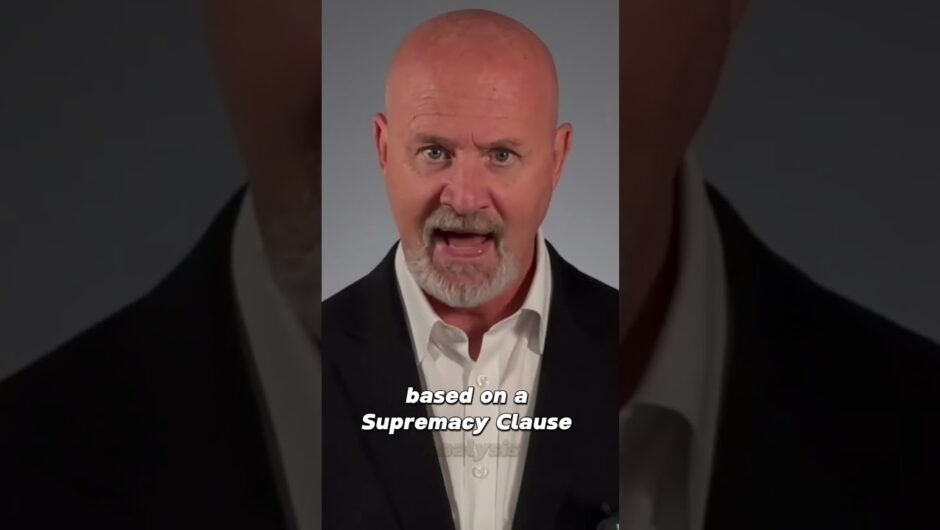news, latest-news, cyclists, canberra, bike lanes, pedal power
Bike lanes on trunk roads lead motorists to pass closer to cyclists and may not provide enough protection for riders, a study of Canberra road behaviour has found. “Additional measures (beyond a simple bike lane) may be required to protect cyclists on these types of road,” the paper said. Researchers from the University of Adelaide tracked the distance between cyclists and motorists on Canberra roads across nearly 11,000 passing events. Canberra drivers generally complied with minimum passing distances, with 12.3 per cent of passes found to be too close. Roads with higher speed limits increased the likelihood of dangerous passing distances, with bike lanes on slower roads also increasing the average passing distance. However, passing distances were found to be 6 centimetres larger on average on high-speed trunk roads without bike lanes than high-speed trunk roads with bike lanes. Trunk roads in ACT include the Federal and Barton Highways, Northbourne Avenue, Commonwealth Avenue, part of State Circle and part of Canberra Avenue. “These findings indicate that further research is warranted to gain a more thorough understanding of why there is reduced effectiveness for bike lanes on these ‘trunk’ roads,” the paper, published in the Accident Analysis & Prevention journal, said. Cyclists Leonie Doyle and Roslyn Harper, who commute to work each day along Adelaide Avenue, said drivers were mostly considerate and passed with enough distance – the main trouble was with unclear crossings over slip lanes and debris in cycle lanes. “Canberra drivers are, in the main, pretty good. Every now and then you will have a close pass which is an unpleasant experience. Generally, I’m pretty happy, but I’m highly experienced and I’ve been at this for a long time; I feel comfortable riding in traffic,” Ms Doyle said. Ms Doyle said if cyclists couldn’t ride on the road, they were relegated to suburban streets and meandering paths. “I think if people are looking for an efficient way to get to work, you might want to look at making on-road cycling a little bit safer to get a few more users,” she said. Ms Harper said she liked on-road cycling lanes, but they were no help when they forced riders to cross over a lane of oncoming traffic. “If we had better infrastructure, like in Holland, more people would ride, because they would feel safer and it’d be quicker and it’d be easier, and they could leave their car at home. And there’d be less cars on the road for those people who need to use their car; they’d be happier too,” Ms Harper said. Pedal Power chief executive Ian Ross said he was concerned by the findings of the research, which he said showed roughly one in 10 cars were still passing dangerously and life-threateningly close to cyclists. “The University of Adelaide study highlights the need for a safe, direct cycleway network that is adequately separated from both vehicles and pedestrians,” Mr Ross said. Mr Ross said more people needed to ride their bikes in Canberra if the ACT was to achieve its zero net-emissions target, which required direct cycleways between town centres. “Canberra’s roads have been designed to optimise rapid car transport between city centres. Our trunk routes are wide, direct, and have been well designed to minimise crossings and other interruptions to traffic flow,” Mr Ross said. “In contrast, the ACT’s existing shared path network is often meandering, built to the narrowest standard width, requires frequent stops at crossings, and is used by a growing number of varied path users who move at different speeds.” Mr Ross said adequately separated cycleways along Canberra’s major trunk routes was the clear next step to increase active travel participation rates. READ MORE: The ACT government was committed to considering new, best-practice designs for intersections that prioritise walking and cycling, a spokesman said. “Trunk roads as defined in the study are a small subset of the arterial roads that comprise the road network in the ACT – these roads were designed and constructed to meet the standards at that time,” the spokesman said. “The design standards have changed over time and differentiate between new works and older established areas. Noting that in established areas, there can be some constraints that impact on the ability to provide facilities that meet all current standards.” The spokesman said off-road paths were included in new major road projects, including the Majura Parkway and the duplication of Horse Park Drive. A feasibility study for stage 2B of light rail, expected to run down Adelaide Avenue, will consider pedestrian and cyclist options, the spokesman said. “The ACT has an extensive network of off-road paths that provide access to town and group centres, offering an alternative to on-road cycling,” he said. Our journalists work hard to provide local, up-to-date news to the community. This is how you can continue to access our trusted content:
/images/transform/v1/crop/frm/35sFyBanpD896MKnAH5FRtj/55b955ba-e4d5-4e4b-94f0-30bd6f797c8d.jpg/r17_0_2973_1670_w1200_h678_fmax.jpg
Bike lanes on trunk roads lead motorists to pass closer to cyclists and may not provide enough protection for riders, a study of Canberra road behaviour has found.
“Additional measures (beyond a simple bike lane) may be required to protect cyclists on these types of road,” the paper said.
Researchers from the University of Adelaide tracked the distance between cyclists and motorists on Canberra roads across nearly 11,000 passing events.
Canberra drivers generally complied with minimum passing distances, with 12.3 per cent of passes found to be too close.
Roads with higher speed limits increased the likelihood of dangerous passing distances, with bike lanes on slower roads also increasing the average passing distance.
However, passing distances were found to be 6 centimetres larger on average on high-speed trunk roads without bike lanes than high-speed trunk roads with bike lanes.
Trunk roads in ACT include the Federal and Barton Highways, Northbourne Avenue, Commonwealth Avenue, part of State Circle and part of Canberra Avenue.
“These findings indicate that further research is warranted to gain a more thorough understanding of why there is reduced effectiveness for bike lanes on these ‘trunk’ roads,” the paper, published in the Accident Analysis & Prevention journal, said.
If we had better infrastructure, like in Holland, more people would ride, because they would feel safer and it’d be quicker and it’d be easier, and they could leave their car at home.
Cyclist Roslyn Harper
Cyclists Leonie Doyle and Roslyn Harper, who commute to work each day along Adelaide Avenue, said drivers were mostly considerate and passed with enough distance – the main trouble was with unclear crossings over slip lanes and debris in cycle lanes.
“Canberra drivers are, in the main, pretty good. Every now and then you will have a close pass which is an unpleasant experience. Generally, I’m pretty happy, but I’m highly experienced and I’ve been at this for a long time; I feel comfortable riding in traffic,” Ms Doyle said.
Ms Doyle said if cyclists couldn’t ride on the road, they were relegated to suburban streets and meandering paths.
“I think if people are looking for an efficient way to get to work, you might want to look at making on-road cycling a little bit safer to get a few more users,” she said.
Ms Harper said she liked on-road cycling lanes, but they were no help when they forced riders to cross over a lane of oncoming traffic.
Roslyn Harper, left, and Leonie Doyle negotiate the crossing over a slip lane on Adelaide Avenue, a required manoeuvre which they say hampers commuter cycling. Picture: Karleen Minney
“If we had better infrastructure, like in Holland, more people would ride, because they would feel safer and it’d be quicker and it’d be easier, and they could leave their car at home. And there’d be less cars on the road for those people who need to use their car; they’d be happier too,” Ms Harper said.
Pedal Power chief executive Ian Ross said he was concerned by the findings of the research, which he said showed roughly one in 10 cars were still passing dangerously and life-threateningly close to cyclists.
“The University of Adelaide study highlights the need for a safe, direct cycleway network that is adequately separated from both vehicles and pedestrians,” Mr Ross said.
Mr Ross said more people needed to ride their bikes in Canberra if the ACT was to achieve its zero net-emissions target, which required direct cycleways between town centres.
“Canberra’s roads have been designed to optimise rapid car transport between city centres. Our trunk routes are wide, direct, and have been well designed to minimise crossings and other interruptions to traffic flow,” Mr Ross said.
“In contrast, the ACT’s existing shared path network is often meandering, built to the narrowest standard width, requires frequent stops at crossings, and is used by a growing number of varied path users who move at different speeds.”
Mr Ross said adequately separated cycleways along Canberra’s major trunk routes was the clear next step to increase active travel participation rates.
The ACT government was committed to considering new, best-practice designs for intersections that prioritise walking and cycling, a spokesman said.
“Trunk roads as defined in the study are a small subset of the arterial roads that comprise the road network in the ACT – these roads were designed and constructed to meet the standards at that time,” the spokesman said.
“The design standards have changed over time and differentiate between new works and older established areas. Noting that in established areas, there can be some constraints that impact on the ability to provide facilities that meet all current standards.”
The spokesman said off-road paths were included in new major road projects, including the Majura Parkway and the duplication of Horse Park Drive.
A feasibility study for stage 2B of light rail, expected to run down Adelaide Avenue, will consider pedestrian and cyclist options, the spokesman said.
“The ACT has an extensive network of off-road paths that provide access to town and group centres, offering an alternative to on-road cycling,” he said.
Our journalists work hard to provide local, up-to-date news to the community. This is how you can continue to access our trusted content:






